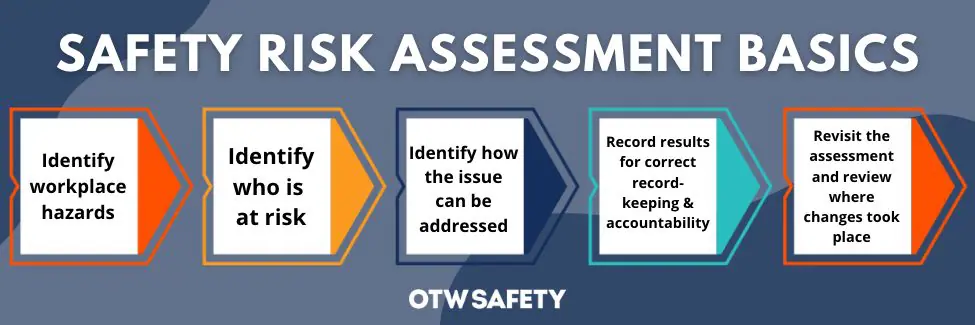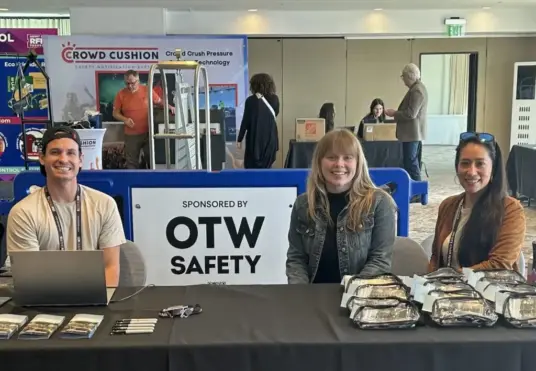How to Complete a Safety Risk Assessment: Part 1
Follow along with our blog for our series on completing safety risk assessments in various settings.
In this series, we will discuss safety risk assessments in various workplaces and how to complete them. Follow along for assessment guides on airport construction sites, concert venues, and more!
Let’s start with the basics
What is a risk safety assessment?
To put it succinctly, a risk safety assessment gauges and appraises risks in any given workplace and lays out a plan to remedy them. A safety risk assessment should be a regularly scheduled occurrence, within industries that require them, as a crucial part of a comprehensive health and safety policy. Risk assessments allow business owners, managers, etc, to maintain safe guidelines and procedures and to make changes and improvements where they are necessary. Procedures and policies must be proportionate to the risks present at any given organization or job site. A good rule of thumb to create and maintain a health and safety policy is to plan – determining the founding factors of your policy, how performance will be measured, etc, do – performing risk assessments and determining necessary changes and/or maintenance of current procedures, check – regularly monitoring and reporting outcomes and investigating where any issues arise, and act – reviewing performance both as a whole and individually throughout the organization, as well as taking action in order to remedy any issues.
How to complete a general safety risk assessment
Many of the steps to completing a safety risk assessment can translate to any workplace, so let’s discuss the general requirements when assessing workplaces and venues.
Identify your hazards.
First, workplace hazards need to be identified. This can look like any number of things, but covering the following items will ensure that your assessment is accurate:
- Assess the worksite: Keep an eye out for potential pitfalls, dangers, and hazards that might not otherwise be addressed.
- Talk to the employees: While you may not notice everything during your limited perusal, the people who frequent a roadside site will likely see things regularly that need to be addressed. There also might be circumstances where only specific workers encounter a particular hazard, and these must be brought to light as well.
- Review old records: This gives you a starting place for your current assessment and something to compare to when addressing issues new and old, as well as possible solutions and those that have already been attempted.
- Consult manuals on machinery and equipment relevant to the site: All equipment most likely has a manual, whether large or small, and is the best place to start when determining proper use and operating procedures or potential hazards.
- Consider long-term health hazards such as noise, vibrations, and harmful substances: These health hazards need to be considered in all circumstances, as effects from extended exposure to dangerous levels of these things can be hugely detrimental to construction workers.
Identify who is at risk.
While workers are generally going to be the most impacted by consistent (and potential) hazards, you must also consider the people who come to the area less frequently, as well as those who are vulnerable (i.e. people who are pregnant, disabled, new to the site, those who speak English as a second language, or those who struggle with their mental health). These less consistently present people might consist of visitors, contractors, delivery drivers, cleaners, and more.

Identify how the issue(s) can be addressed.
If at all possible, the best remedy for avoiding hazards is to prevent them! If it is not possible to completely prevent any hazard from occurring, minimizing the risk is the next best step. This means controlling the environment to the point that, while the danger may still be present, the likelihood of injury when all procedures are followed correctly is at a minimum. This might require a change in routines, workflows, procedures, or safety sheets in order to maintain the utmost safety at any given site.
Record results for correct recordkeeping and accountability.
An appropriate (and relevant to the site) safety risk assessment form is necessary in order to properly conduct a risk assessment. Having a consistent form allows for updates as new assessments take place and keeps track of past assessments and changes that have been recommended and/or implemented. Evidence of potential risks is required, so a form is the most concise and simplest way to retain and maintain accurate logs of risks, recommendations, and actions taken. Where possible, try to ensure that the hazards listed go in order of importance so the most immediate risks are at the top.
A safety risk assessment form should include all of the above information, as well as a few more things for complete accuracy. Here is a recommended list of items that will help you be the most meticulous in your record-keeping:
- What is the hazard?
- Who does this affect and how does it affect them?
- Can it be controlled and, if so, how?
- Are there any further actions to take?
- Who is responsible for it?
- Date of deadline
- Date of completion
- Have the actions been completed?
In addition, your risk assessment form should include:
- The name of the person who completed the risk assessment
- The date the assessment was carried out
- The date to review the risk assessment
Download a Safety Risk Assessment template at safetyculture.com.
Revisit the assessment and review where changes took place (and what still needs to be done).
Follow-through is as important as achieving a complete and accurate safety risk assessment! If no action takes place in order to remedy found issues, your risk assessment might not be as valuable as it should be – workers and managers should be notified of their responsibilities in executing any changes and given a date by which they should be completed. When this date arrives, you can then revisit your assessment, review the changes that have been implemented (and determine if they are sufficient), and take note of what still needs to be done.
While these steps and questions cover the basics, your answers to each should be anything but – each hazard should be intentionally considered and reviewed in regard to each industry and at each specific location.
Keep an eye out for more posts on completing safety risk assessments in specific venues such as roadside construction sites, concert venues, airport sites, and more!


